September 1, 2017
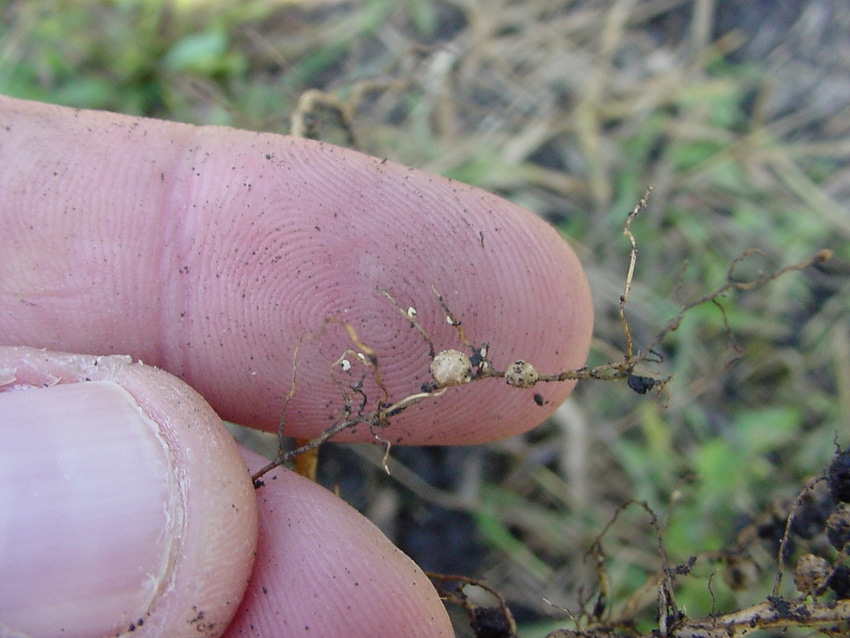
Soybean cyst nematode (SCN) is a microscopic and parasitic worm (scientific name is Heterodera glycines). It is the most destructive pathogen of soybeans in North America and yield loss estimates from SCN have been measured between $100s of millions to over $1 billion annually.
What is Soybean Cyst Nematode (SCN) and Why is it Important?
Soybean cyst nematode (SCN) is a microscopic and parasitic worm (scientific name is Heterodera glycines). It is the most destructive pathogen of soybeans in North America and yield loss estimates from SCN have been measured between $100s of millions to over $1 billion annually. Additionally, SCN can make other diseases worse, particularly Brown Stem Rot and Sudden Death Syndrome (SDS has not been confirmed in ND but is prevalent in MN and SD).
Where is SCN in North Dakota?
Soybean cyst nematode was first identified in the United States in 1954 in North Carolina. Over the next half century, the nematode spread throughout the country (Figure 1), and in 2003 was identified in North Dakota for the first time (Richland County). Currently, SCN has been observed in 19 counties in North Dakota (Figure 2). Even though SCN occurs in 19 ND counties, it is not distributed evenly in them; the nematode is common in Cass and Richland but likely rare in counties further north and west.
How does SCN move?
SCN has been able to move across the country partly because of its biology. The nematode begins its life cycle as an egg, goes through several juvenile stages (infecting soybeans at the juvenile 2 [J2] stage) and eventually the impregnated female worms enlarge and their body wall becomes a ‘cyst’. The cyst is a very tough structure that can protect the eggs for many years. The cyst will move with soil on equipment, wind, water, birds, etc., and is the reason that SCN continues to spread in North America.
What does SCN look like?
The most common symptom of soybeans infected with SCN is healthy looking soybeans. In fact, a 15-30% yield loss can occur (in spots in fields) before you see any symptoms at all. Once you do see symptoms, they typically show up as general stunting or yellowing spots that often become visible in August (Figure 3). Sometimes it is possible to see the white females (cysts) on the soybeans in late July or August. You need to carefully dig up a plant with a shovel, gently remove the soil from the roots, and you may need a hand lens to see them clearly. The females appear as cream-colored lemon-shaped objects on the roots (Figure 4). Towards the end of the season the white females turn into brown cysts, and are nearly impossible to see (Figure 5).
Why is soil sampling for SCN important?
If you find SCN, you can manage SCN. Soil sampling is the most reliable way to identify SCN. To help make sampling easier, the North Dakota Soybean Council is sponsoring an SCN sampling program in North Dakota (see next article).
How do you manage SCN?
Determining if you have SCN is the first step (soil sample). If you have SCN, then you must manage it or its population can explode quickly. The objective is to keep the egg levels low. To do this, we recommend; 1) Crop rotation: soybeans and dry beans are susceptible, every other crop is a good choice for reducing egg levels, 2) Resistant varieties: the sources of resistance used in soybean varieties are generally effective in North Dakota, and 3) Rotate varieties or resistance (if possible) – this helps preserve the host resistance. Additionally, in some situations a seed treatment may be considered. Nematicide seed treatments are not meant to replace genetic resistance or crop rotation, but may be helpful in some situations (for example, very high egg levels or when genetic resistance is not available).
Originally posted by North Dakota State University.
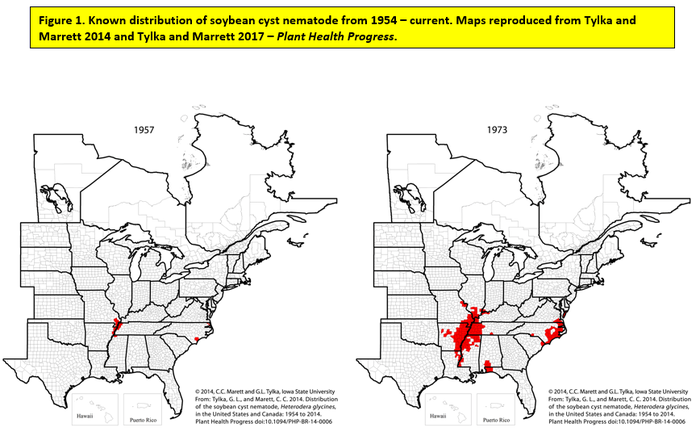
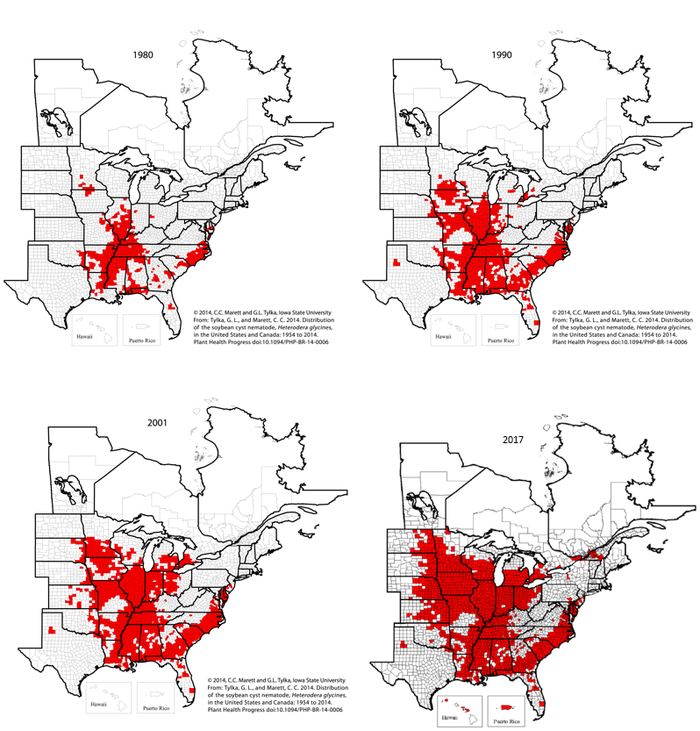
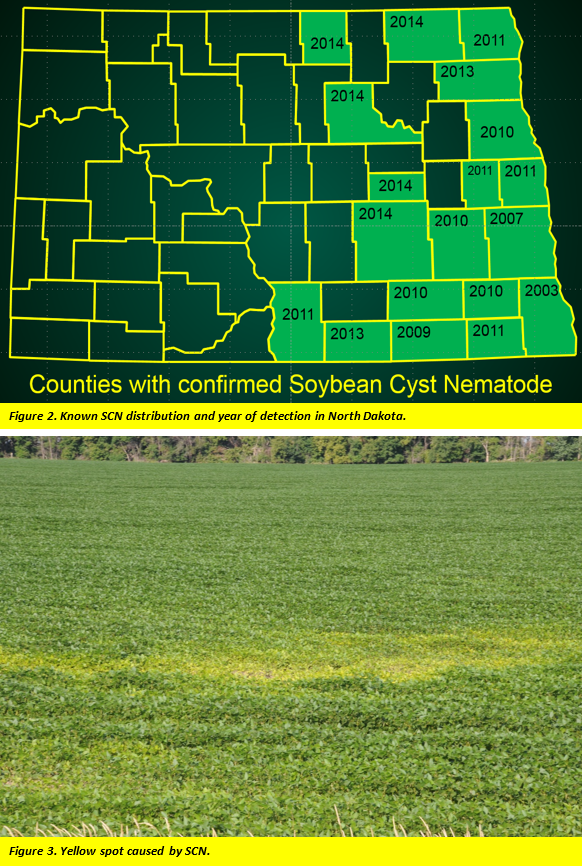
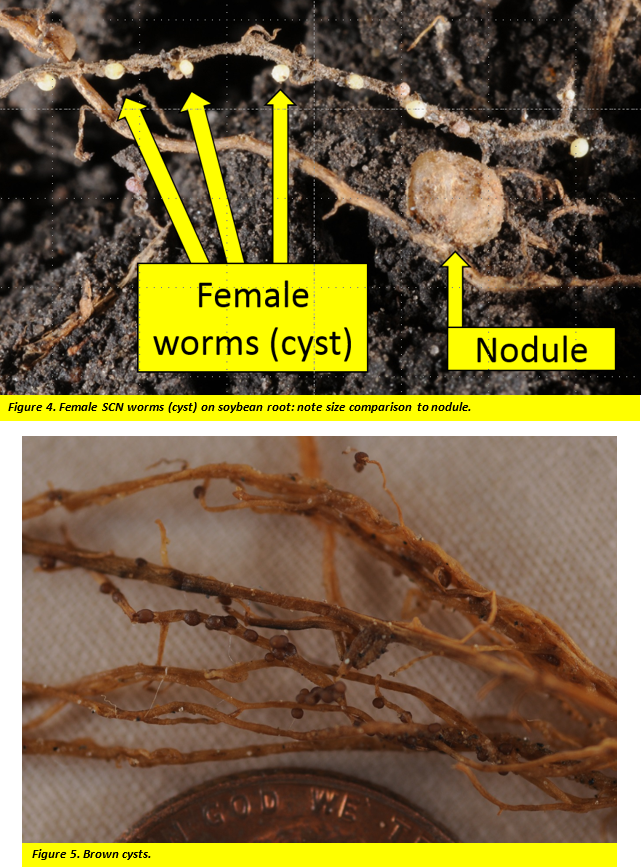
You May Also Like




